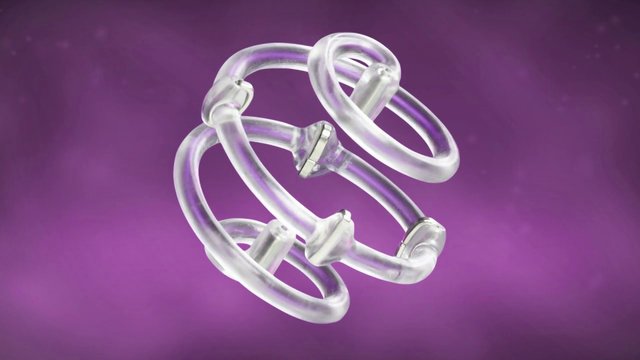3D Marker Supports Breast Cancer Treatment
By MedImaging International staff writers
Posted on 04 Dec 2013
A novel three-dimensional (3D) marker facilitates postsurgical radiation treatment for breast cancer by identifying the surgical site of tumor removal clearly and accurately.Posted on 04 Dec 2013
The BioZorb device possesses a unique open-spiral design that incorporates six permanent titanium clips in a 3D fixed arrangement, provides specific landmarks of the surgical site for treatment planning, delivery, and follow-up. Since the BioZorb is sutured directly to the tissues surrounding the cavity where the tumor was removed, it stays in the right spot and enables more precise targeting of the radiation after surgery. Made of a bioabsorbable material, the device is absorbed by the patient's body over time, rather than requiring a surgeon to remove it later.

Image: The BioZorb 3D bioresorbable marker device (Photo courtesy of Focal Therapeutics).
The BioZorb is especially useful when there is no visible residual seroma; a condition encountered during radiation therapy planning that makes it very difficult to identify the target region. The 3D marker may also assist with patient positioning during treatment, as well as advanced treatment techniques such as image‐guided radiation therapy and image-based tracking of the lumpectomy site during respiratory motion. The BioZorb device is a product of Focal Therapeutics (Portola Valley, CA, USA), and has been approved by the US Food and Drug Administration (FDA).
“This device represents a significant advancement towards the precise delivery of radiation treatment,” said radiation oncologist Robert R. Kuske, Jr., MD, of Arizona Breast Cancer Specialists (Phoenix, USA). “With the BioZorb, we know exactly where to aim the dose, so we can irradiate a smaller amount of tissue. That gives us the ability to get better results with less risk to healthy tissues nearby.”
“The learning curve for placing this device is straightforward, and it fit smoothly into my routine from day one. I've been using it in most of my patients,” said surgical oncologist Michael J. Cross, MD, who was the first US surgeon to place the BioZorb tissue marker. “The best thing about using it is the confidence we have that our patient's tumor site will be well-defined for the radiation oncologist.”
Related Links:
Focal Therapeutics













